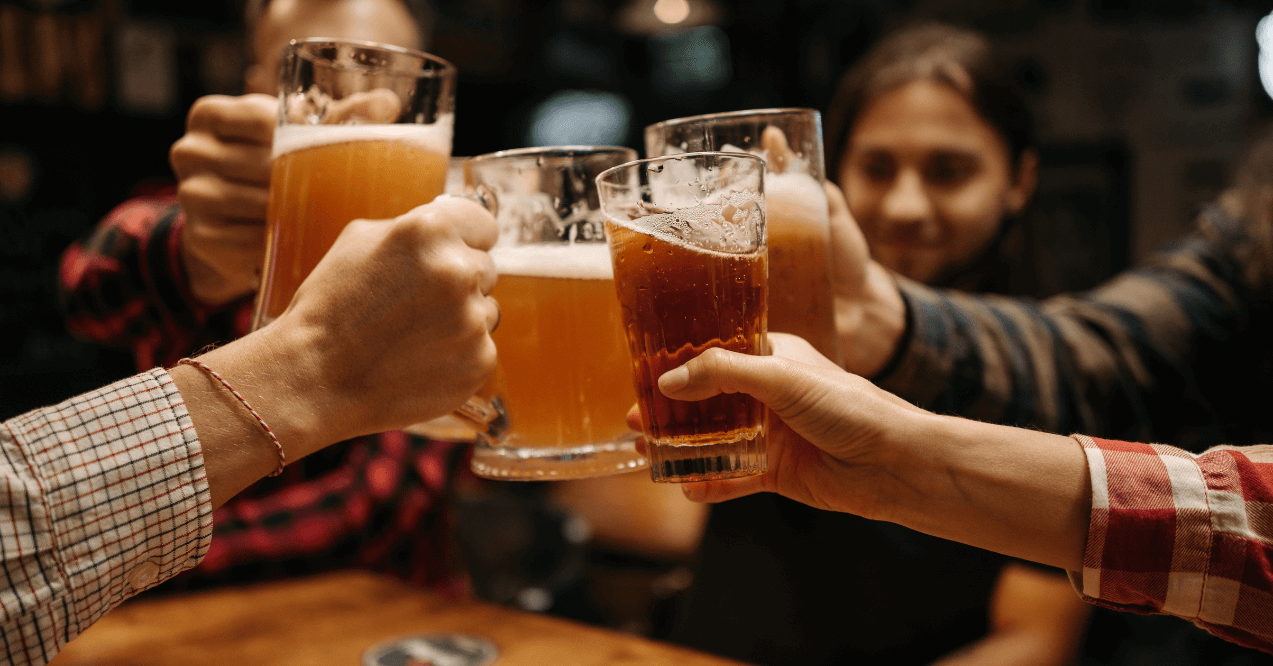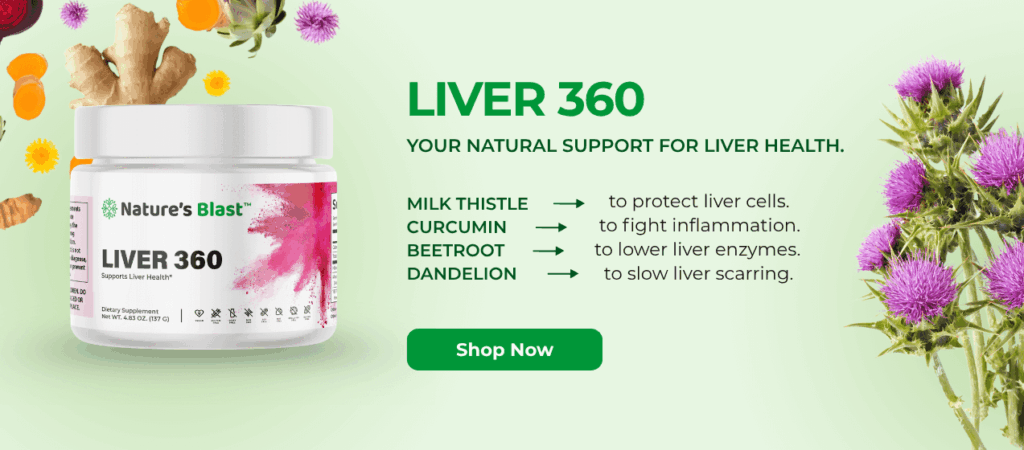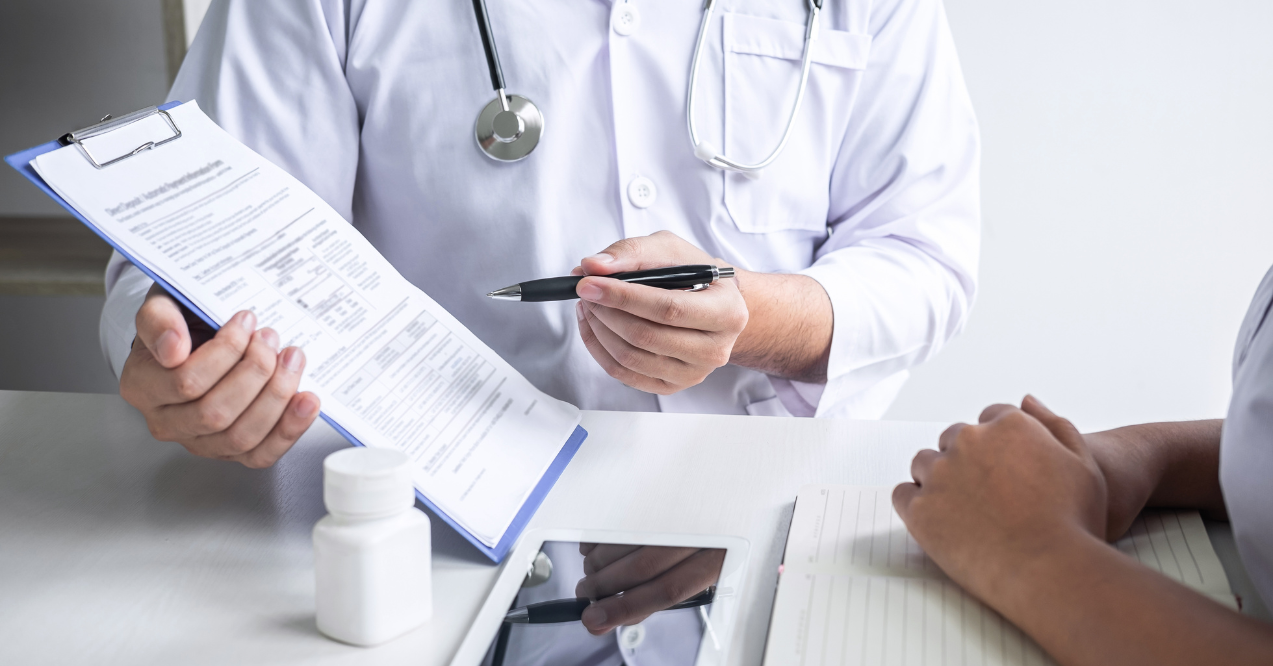7 Clear Signs Your Liver Is Healing from Alcohol
Medically reviewed by our experts


Signs your liver is healing from alcohol can appear within weeks of making positive changes. Your liver is one of the body’s most amazing organs, with a natural ability to bounce back and repair itself when you give it a chance.
For many people who choose to cut back or stop drinking alcohol, these positive changes serve as powerful motivation to stay on track, especially if they follow a 7-day liver cleanse diet for example. Whether you’ve just started your journey or have been alcohol-free for a while, spotting these encouraging signs can help you stay motivated and feel confident.
How Long Does It Take for the Liver to Heal?
Wondering how long for liver to recover from alcohol? Your liver can begin showing signs of improvement within days of reducing or stopping alcohol consumption. This remarkable organ starts its natural restoration process almost immediately, though the complete timeline varies from person to person.
- First Week: Fat buildup and inflammation begin to decrease. The liver starts adjusting to life without alcohol’s effects.
First Month: By four weeks, many notice more energy and improved well-being as liver cells work to restore themselves.
1–2 Months: Moderate drinkers may see substantial improvements, with better toxin filtering and a steady rise in energy.
6–12 Months: Those with heavier drinking patterns often need more time, but steady progress still supports restoration.
As you begin noticing improvements in your liver health, you may wonder about other areas of wellness that improve with time, such as vision. Does your eyesight improve with age? While liver healing takes time, many individuals report positive changes in their overall health, including better eye health, after adopting a healthier lifestyle.
Can the Liver Heal from Alcohol Damage?

The liver possesses an extraordinary ability to repair and regenerate itself. When you stop or reduce alcohol consumption, your liver can often restore much of its natural function and vitality – even after experiencing the effects of alcohol use.
Think of your liver like a self-repairing filter. When you remove the strain of processing alcohol, it can focus its energy on rebuilding healthy tissue. This natural process begins as soon as the burden of alcohol is reduced, allowing the liver to work more efficiently.
Several factors can influence how well your liver bounces back:
- Your overall nutrition and eating habits
- Regular physical activity levels
- Quality of sleep
- Stress management
- Length of time without alcohol
- Previous drinking patterns
Your age could also play a role in how quickly your liver responds to these positive changes. While older adults may need more time to see improvements, the liver maintains its ability to repair itself throughout life. The key is giving it the time and support it needs.
Signs Your Liver Is Healing Itself from Alcohol

When your liver begins to recover from alcohol, several positive changes become noticeable in your daily life. Signs your liver is healing from alcohol often appear gradually, encouraging evidence that your body is responding well to your healthy choices. Understanding these improvements can help you recognize the progress you’re making.
1. Increased Energy
As your liver regains its strength, you may notice a welcome boost in your energy levels. This is one of the most encouraging signs your liver is healing from alcohol. Many people report feeling more refreshed in the morning and maintaining better energy throughout the day. This natural improvement happens because your liver can now focus on its essential functions rather than being burdened by the constant processing of alcohol.
2. Better Appetite and Digestion
Your appetite often improves as your liver function strengthens. You might notice:
- A natural return to regular eating patterns
- Better absorption of nutrients from food
- More comfortable digestion after meals
- Reduced bloating and stomach discomfort
3. Clearer Thinking and Mental Sharpness
When your liver functions more efficiently, mental clarity often improves. You may experience:
- Sharper memory and focus
- Better concentration on daily tasks
- More stable mood throughout the day
- Improved sleep quality at night
4. Stabilized Weight
As your liver regains its natural function, you may notice your weight becoming more stable. This happens because your body can now process and store nutrients more effectively, supporting your overall well-being.
5. Improved Natural Defenses
A stronger liver supports your body’s natural protection systems. You might notice:
- Fewer occasional minor health issues
- Stronger resilience to seasonal changes
- More stable energy levels day to day
6. Reduced Yellowing of Skin and Eyes
A significant sign of improvement is the return of natural skin tone and eye color. This visible change indicates your liver is processing substances more effectively.
7. Normalized Liver Enzyme Levels
Blood tests may show improvements in liver enzyme levels, suggesting your liver is functioning more efficiently. These positive changes can be tracked through regular check-ups.
How Alcohol Affects the Liver?

Your liver naturally processes one standard drink per hour on average. When alcohol consumption exceeds this capacity, it can place significant strain on this vital organ. Understanding how alcohol impacts your liver helps explain why reducing intake can lead to positive changes.
When alcohol enters your system, your liver must prioritize processing it over other important functions. Think of your liver like a busy processing plant – when too much work comes in at once, other tasks have to wait. This can affect how well your liver handles its other essential roles.
The impact of alcohol on your liver typically progresses through several stages:
| Stage | What Happens in the Liver | Key Notes |
|---|---|---|
| First Stage | Extra fat begins to build up in liver cells. | Usually no symptoms. Reducing alcohol intake at this stage can allow the liver to naturally restore itself. |
| Second Stage | Inflammation may develop in the liver tissue, affecting how nutrients are processed and energy is maintained. | The liver often responds well to positive lifestyle changes if addressed early. |
| Third Stage | Long-term heavy alcohol use leads to more serious changes in liver tissue, reducing the liver’s ability to process toxins and maintain overall health. | Even at this stage, lowering alcohol intake can support the liver’s natural function. |
Beyond alcohol, it’s worth considering: Can Stress Cause Elevated Liver Enzymes? The answer is yes; chronic stress and anxiety have been shown to contribute to higher liver enzyme levels by reducing blood flow to the liver and affecting hormone production. Therefore, managing stress is also a key factor in maintaining optimal liver health.
How Much Alcohol Can Cause Liver Damage?
The amount of alcohol that can affect your liver varies from person to person. Understanding these differences can help you make informed choices about your alcohol consumption.
For women, consuming more than one standard drink per day may place extra stress on the liver over time. For men, the threshold is typically two standard drinks daily. It’s important to know what counts as a standard drink:
- 12 ounces of regular beer (5% alcohol)
- 5 ounces of wine (12% alcohol)
- 1.5 ounces of distilled spirits (40% alcohol)
Certain drinking patterns can place additional strain on your liver:
- Drinking without food
- Consuming multiple drinks in a short time
- Regular daily drinking without alcohol-free days
- Mixing different types of alcoholic beverages
Your liver’s response to alcohol can also be influenced by:
- Your age (older adults often process alcohol more slowly)
- Body size and composition
- Gender (women typically process alcohol differently than men)
- Overall health status
- Family history
- Hydration levels
It’s important to note that these guidelines are general ranges. Some people may experience effects with less alcohol, while others might show changes with more. The key is paying attention to how your body responds and making adjustments that work for your situation.
When to Stop Drinking and Seek Help
Recognizing when to modify your drinking habits is a crucial step toward supporting your liver health. Several signs may indicate it’s time to make changes to your alcohol consumption patterns. Paying attention to these common indicators can help you understand if it’s time to consider a “liver detox” or a more significant change in your habits, much like being aware of the 10 signs your liver needs detoxing.
Signs to Pay Attention To:
- Finding it difficult to stick to drinking limits you set for yourself.
- Needing more alcohol to feel its effects.
- Experiencing mood changes or irritability.
- Having trouble with sleep after drinking.
- Noticing changes in your energy levels.
- Feeling unwell the day after drinking.
- Missing important activities due to alcohol use.
- Concerned family members or friends.
Support is Available:
- Support groups in your community.
- Online support communities.
- Professional counseling services.
- Alcohol-free social activities.
- Self-help books and resources.
- Friends and family who support your goals.
Making Gradual Changes:
- Setting specific alcohol-free days each week.
- Tracking your drinking patterns.
- Finding alternative activities for times you usually drink.
- Building a support network of people who understand your goals.
Making changes to drinking habits is a personal journey, and different approaches work for different people. The key is finding strategies that fit your lifestyle and goals. To support these positive changes, consider natural liver detox supplements like Liver 360, which combines traditional ingredients like Turmeric and Milk Thistle that have been used for centuries to promote liver health.

When paired with lifestyle modifications, this premium formula can help maintain your liver’s natural functions. Remember that making changes to drinking habits is a personal journey, and different approaches work for different people. The key is finding strategies that fit your lifestyle and goals.
Conclusion
Signs your liver is healing from alcohol can provide encouraging evidence that your decision to reduce drinking is making a positive difference. From improved energy levels to better mental clarity, these changes often appear gradually but steadily.
Remember that your liver has a remarkable ability to restore itself when given the opportunity. Whether you’re just starting to cut back or have maintained an alcohol-free lifestyle for some time, each day without alcohol supports your liver’s natural functions. By staying consistent with your healthy choices, you’re giving your body the best chance to thrive.
Signs your liver is healing itself include more energy, clearer thinking, better digestion, improved appetite, stabilized weight, and healthier-looking skin and eyes. Over time, blood tests may also show normalized liver enzyme levels.
The liver starts improving within days of reducing alcohol. Noticeable changes may appear in 1–4 weeks, while full recovery can take 6–12 months depending on drinking history, age, and overall health.
Early recovery signs include reduced bloating, better sleep, increased mental clarity, and more consistent daily energy. These small improvements show your liver is responding well to lifestyle changes.
In many cases, yes. The liver has strong regenerative abilities. With long-term alcohol reduction or abstinence, healthy diet, and supportive habits, much of the liver’s function can be restored.
FAQ
References


